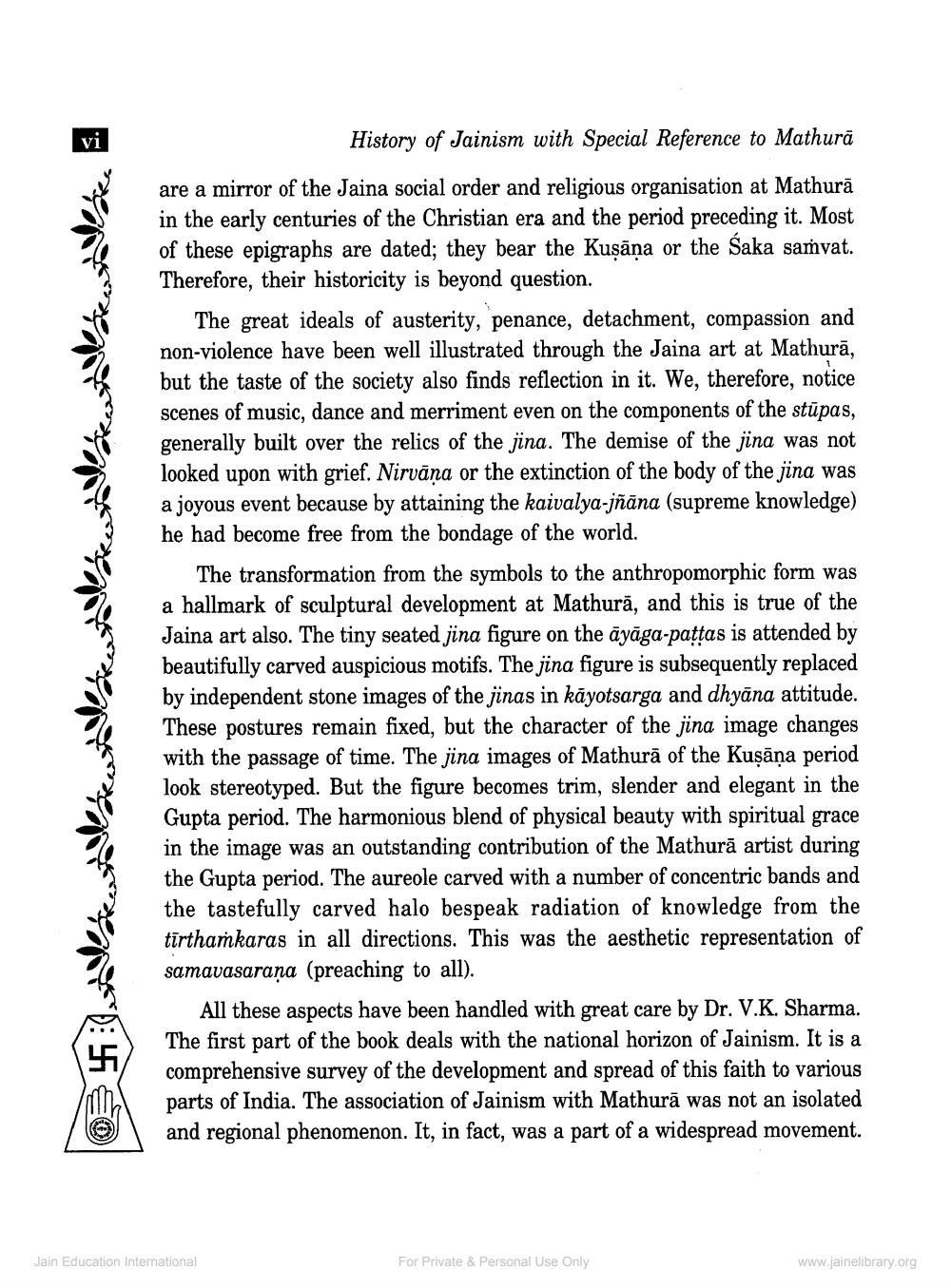Book Title: History of Jainism Author(s): U K Sharma Publisher: D K Print World View full book textPage 8
________________ History of Jainism with Special Reference to Mathura are a mirror of the Jaina social order and religious organisation at Mathurā in the early centuries of the Christian era and the period preceding it. Most of these epigraphs are dated; they bear the Kuşāņa or the Šaka samvat. Therefore, their historicity is beyond question. The great ideals of austerity, penance, detachment, compassion and non-violence have been well illustrated through the Jaina art at Mathurā, but the taste of the society also finds reflection in it. We, therefore, notice scenes of music, dance and merriment even on the components of the stūpas, generally built over the relics of the jina. The demise of the jina was not looked upon with grief. Nirvāṇa or the extinction of the body of the jina was a joyous event because by attaining the kaivalya-jñāna (supreme knowledge) he had become free from the bondage of the world. The transformation from the symbols to the anthropomorphic form was a hallmark of sculptural development at Mathurā, and this is true of the Jaina art also. The tiny seated jina figure on the āyāga-pattas is attended by beautifully carved auspicious motifs. The jina figure is subsequently replaced by independent stone images of the jinas in kāyotsarga and dhyāna attitude. These postures remain fixed, but the character of the jina image changes with the passage of time. The jina images of Mathurā of the Kusāna period look stereotyped. But the figure becomes trim, slender and elegant in the Gupta period. The harmonious blend of physical beauty with spiritual grace in the image was an outstanding contribution of the Mathurā artist during the Gupta period. The aureole carved with a number of concentric bands and the tastefully carved halo bespeak radiation of knowledge from the tīrthařkaras in all directions. This was the aesthetic representation of samavasaraņa (preaching to all). All these aspects have been handled with great care by Dr. V.K. Sharma. The first part of the book deals with the national horizon of Jainism. It is a comprehensive survey of the development and spread of this faith to various parts of India. The association of Jainism with Mathurā was not an isolated and regional phenomenon. It, in fact, was a part of a widespread movement. Jain Education International For Private & Personal Use Only www.jainelibrary.orgPage Navigation
1 ... 6 7 8 9 10 11 12 13 14 15 16 17 18 19 20 21 22 23 24 25 26 27 28 29 30 31 32 33 34 35 36 37 38 39 40 41 42 43 44 45 46 47 48 49 50 51 52 53 54 55 56 57 58 59 60 61 62 63 64 65 66 67 68 69 70 71 72 73 74 75 76 77 78 79 80 81 82 ... 304
